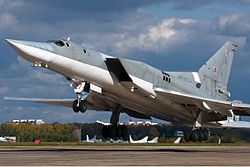
Anti-flash white is a white colour commonly seen on British, Soviet, and U.S. nuclear bombers. [1] The purpose of the colour is to reflect some of the thermal radiation from a nuclear explosion, protecting the aircraft and its occupants.[ citation needed ]



